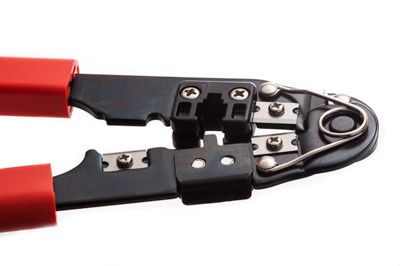Introduction
If you've ever wondered whether your cabling is truly "PoE-ready" or questioned why some devices lose power over longer distances. In this article, we'll explore the truth about RJ45 wiring and PoE—what works, what doesn’t, and how to avoid the pitfalls of power limits, cable heat, and signal loss.
1.What Is RJ45 Wiring?
RJ45 wiring refers to the specific pinout and internal wiring of Ethernet cables terminated with RJ45 connectors. These are commonly used with twisted-pair cables like Cat5e, Cat6, and Cat6a, which carry both data and electrical power in PoE systems.
2.Power Limits: How RJ45 Wiring Impacts PoE Performance
As Power over Ethernet (PoE) evolves—from standard PoE to PoE+, and now PoE++—the RJ45 wiring infrastructure behind these systems plays a critical role in determining how much power actually reaches your device.
However, in practice, the power delivered to the powered device (PD) is affected by several physical and electrical factors:
2.1Cable Type & Construction:
|
Cable Type |
PoE Power Support |
Typical Distance |
Key Features |
|
Cat5e |
PoE / PoE+ |
≤ 90 meters |
Thinner conductors, higher resistance, noticeable voltage drop over long runs |
|
Cat6 |
PoE+ / PoE++ |
≤ 100 meters |
Lower resistance, suitable for medium to high power PoE |
|
Cat6a |
PoE++ |
≤ 100 meters (stable) |
23 AWG thick conductors, better shielding, low power and signal loss |
If you are more interested in the cat5e and cat6 cable types and need to learn more about the differences between the two, for an in-depth comparison of Cat5e vs. Cat6 RJ45 connectors, check out this article.
https://www.glgnet.biz/cat5e-vs-cat6-rj45-jacks-which-one-should-you-choose
2.2 Cable Length:
2.3 RJ45 Wiring Standards (T568A or T568B):
2.4 RJ45 Connector Quality:
3.How RJ45 Wiring Affects Cable Heat in PoE++ Systems?
As Power over Ethernet (PoE) technologies advance—particularly with PoE++ delivering up to 90W—the amount of heat generated inside Ethernet cables has become a serious concern. While RJ45 wiring enables the simultaneous transmission of power and data, it also increases thermal load, especially in high-power or high-density deployments.

3.1Where Cable Heat Becomes a Problem?
In such environments, excess heat can degrade cable insulation, disrupt data transmission, and in extreme cases, pose a fire risk.
3.2The Role of RJ45 Connectors in Heat Management
RJ45 jack connectors are not just endpoints—they are critical thermal and electrical contact points. Poorly crimped or low-quality connectors add resistance, leading to localized heating that compounds overall cable temperature rise.
Inferior RJ45 modular jack with magnetics or unshielded cabling can result in:
3.3 IEEE Compliance & Global Standards
To address these risks, IEEE 802.3bt and global cabling standards (such as TIA-568.2-D, ISO/IEC 11801) now require temperature rise testing in Ethernet cabling systems. This ensures cables can safely carry high current without overheating.
4.Signal Loss in PoE Networks: Best RJ45 Wiring Practices
While Power over Ethernet (PoE) focuses on delivering electrical power through Ethernet cables, signal integrity is equally crucial—especially in today’s high-bandwidth, latency-sensitive networks.

4.1What Causes Signal Loss in RJ45 Wiring?
Improper RJ45 wiring practices:
Low-quality rj45 jack connectors:
Electromagnetic interference (EMI):
Excessive cable length:
4.2Global Best Practices to Reduce Signal Loss
Learn more:
https://www.glgnet.biz/5-key-factors-in-RJ45-wiring-that-actually-impact-internet-speed
If you are interested in rj45wiring, this article can help you understand the top 5 influencing factors.
https://www.glgnet.biz/how-to-pinout-rj45
In PoE , some pins will also transmit power, and the correct pinout is a prerequisite to ensure that the power supply and data transmission are stable and reliable.
Conclusion
RJ45 wiring is more than just connecting wires—it’s a backbone for power and data in modern networks. Whether you're setting up an office, a surveillance system, or a smart building, understanding the interplay between power limits, cable heat, and signal loss can make or break your PoE deployment.